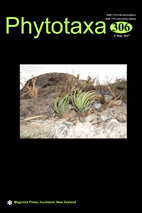Issue:
Vol. 306 No. 1: 5 May 2017
Type: Article
Published: 2017-05-05
Page range: 85-90
Abstract views: 18
PDF downloaded: 1
Rediscovery of Arisaema translucens (Araceae) and notes on A. tuberculatum, two strict endemics of Nilgiris, India
- KONICKAL MAMBETTA PRABHUKUMAR+−
- TARUN CHHABRA+−
- ALOOR JOSE ROBI+−
- RAVEENDRAN JAGADEESAN+−
- CHANDRASSERIL NARAYANAN SUNIL+−
- INDIRA BALACHANDRAN+−
Plant Systematics and Genetic Resources Division, Centre for Medicinal Plants Research, Arya Vaidya Sala, Kottakkal, Kerala, India
Edhkwehlynawd Botanical Refuge (EBR), C/o Dental Clinic, Hospital Road, Ootacamund-643001, Nilgiris, India.
Department of Botany, Bishop Abraham Memorial College, Thuruthicad, Pathanamthitta, Kerala, India.
Plant Systematics and Genetic Resources Division, Centre for Medicinal Plants Research, Arya Vaidya Sala, Kottakkal, Kerala, India.
Post Graduate & Research Department of Botany, S.N.M. College, Maliankara, Ernakulam, Kerala, India.
Plant Systematics and Genetic Resources Division, Centre for Medicinal Plants Research, Arya Vaidya Sala, Kottakkal, Kerala, India.
Araceae
Arisaema
Nilgiri Biosphere Reserve
Rediscovery
Monocots

